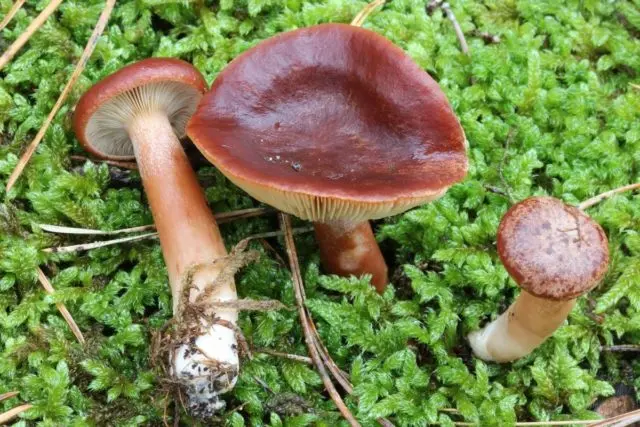Contents
Camphor mushroom (Lactarius camphoratus), also called camphor milkweed, is a prominent representative of the lamellar species of the Russulaceae family, the Milky genus (Lactarius).
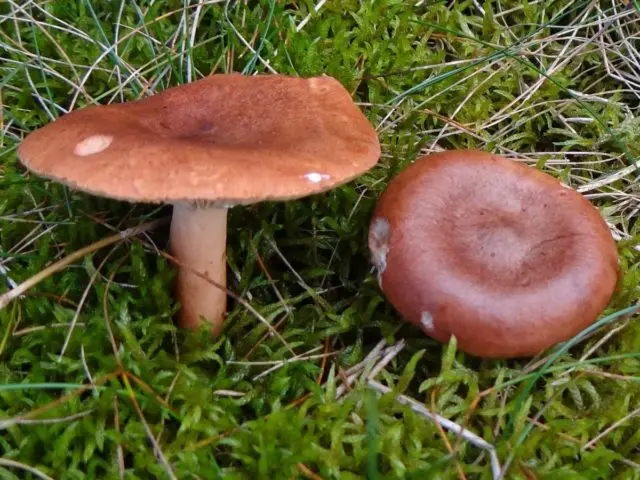
Description of camphor
According to numerous photos and descriptions, camphor mushroom can be imagined as a small brown mushroom with a reddish tinge, rather fragile. In appearance, it is similar to rubella and red-brown milk mushrooms, but is less common in contrast to them.
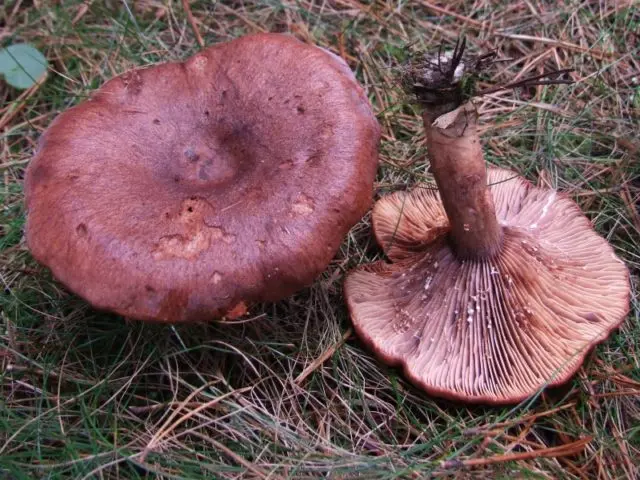
Cap Description
In a young camphor mushroom, the hat is convex, as it grows, it becomes flat or convex-prostrate with a diameter of 2 to 6 cm. Often it is funnel-shaped, slightly depressed in the middle, and a small tubercle may also be present. The edges are ribbed, lowered. The surface of the cap is smooth, matte, its color can be from dark red to red-brown.
Lamellar layer of a dark reddish hue, the plates themselves are wide, adherent or descending, often located. On many specimens, dark spots can be seen.
On the cut, the pulp is reddish, friable, with an unpleasant odor reminiscent of camphor. When damaged, the fungus secretes a white milky juice that does not change color in the air.
Spore powder is cream or white with a yellow tint. The spores themselves under the microscope have a rounded shape with a warty surface. The size is average.
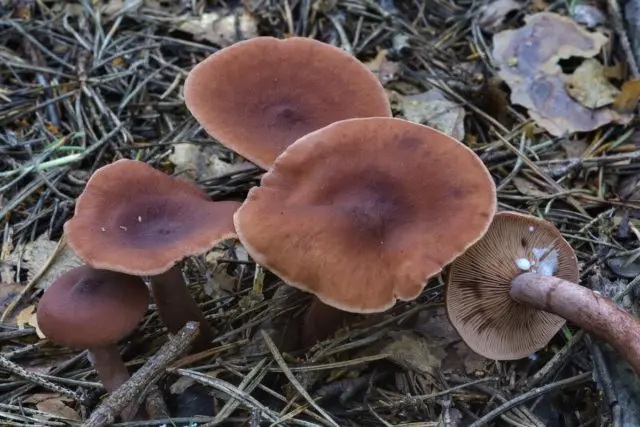
Description of the leg
The leg of the camphor mushroom is cylindrical in shape, can taper towards the base, low, grows only 3-5 cm, while the thickness varies from 0,5-1 cm. The structure is loose, rather dense, there is a cavity inside. Its surface is even, velvety under the cap, and smooth closer to the base. The color is identical to the hat, it can be several tones lighter, the stem darkens with age.
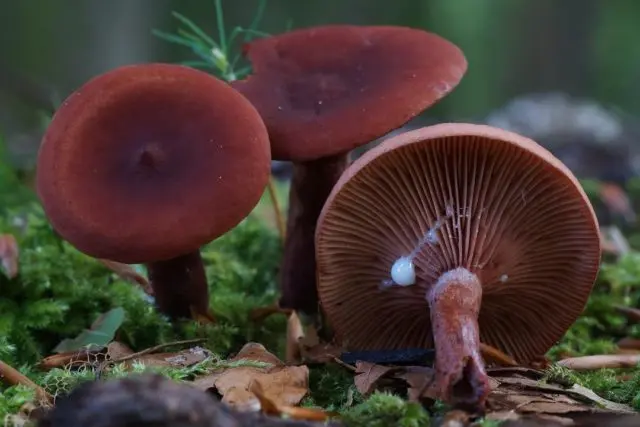
Where and how to grow
Camphor mushrooms can be found in coniferous and mixed, less often deciduous forests located in the temperate zone of Eurasia and North America. In Our Country, it grows mainly in the European part, and can often be found in forests in the Far East.
They prefer loose and acidic soils, and often grow near rotting fallen trees and on mossy-surfaced ground. They form mycorrhiza with various species of coniferous trees, sometimes with some types of deciduous species.
It bears fruit from mid-summer to early autumn (from July to late September). It usually grows in large groups, rarely in pairs or singly.
Twins and their differences
The camphor mushroom has few twins, since its smell is rather unpleasant and difficult to confuse with other species. But still there are mushrooms that have a similar appearance:
- bitter – refers to conditionally edible, twice the size of the milker, and the difference is the absence of an unpleasant odor;

- lactic brown-yellow – it is inedible, it is distinguished by the absence of an unpleasant odor, an uneven red-orange color, changing with milky juice when dried, and a lamellar layer of cream color;

- rubella – another type of conditionally edible mushroom, which has a slightly similar smell and color, but at the same time differs in a darker lamellar layer with a slight purple tint;

- milkweed (red-brown breast) – is an edible mushroom that can be consumed even raw, larger in size and more abundantly secretes milky juice when damaged.

How to distinguish camphor from red and rubella
It is not difficult to distinguish a camphor mushroom from similar ones, because it has an unpleasant odor. But it is worth noting that the intensity of the aroma weakens with age, changing coconut, so it can easily be confused with rubella or red mushroom.
It is possible to distinguish this species from the red-brown milk mushroom and rubella by color. In camphor milkweed, the shade of the cap and stem is darker, while the lamellar layer has a color closer to brown (dark red), while in rubella, the lamellar layer is whitish with a slight creamy tint.
On the cut, the color of the pulp is more red in camphor lactic, while after damage it becomes darker. And if you press on the surface of the cap, a dark brown spot with a golden brown tint will appear.
Another difference is the milky juice, which changes color in the air (in rubella it becomes translucent, and in red it becomes brown).
Is the mushroom edible or not?
Camphor mushroom belongs to a number of edible, but because of the characteristic smell, it is considered to be of low quality. The taste is sweetish, closer to bland. It has no special nutritional value, as it requires preliminary long-term boiling.
How to cook camphor
Young camphor mushrooms are suitable for salting and seasoning.
Since the fruiting bodies have a lot of milky juice, mushrooms must be soaked for at least three days before salting, periodically changing the water. Only after that proceed to salting. The milk mushrooms themselves are laid out in layers in a deep container, sprinkling each layer with plenty of salt (you can add spices and herbs). Then put under pressure and salt for a month. After this time, the mushrooms are transferred to jars and sent to the cellar for another month, after which they can be consumed.
To prepare the seasoning, the camphor mushroom is also pre-soaked and then dried naturally. After dried mushrooms are ground to a state of powder.
Conclusion
Camphor mushroom is a kind of representative of the Milky genus, as it is edible, but at the same time, if cooked incorrectly, it can cause poisoning. In addition, due to the rather unusual pharmacy smell, many mushroom pickers completely neglect to collect this species.










